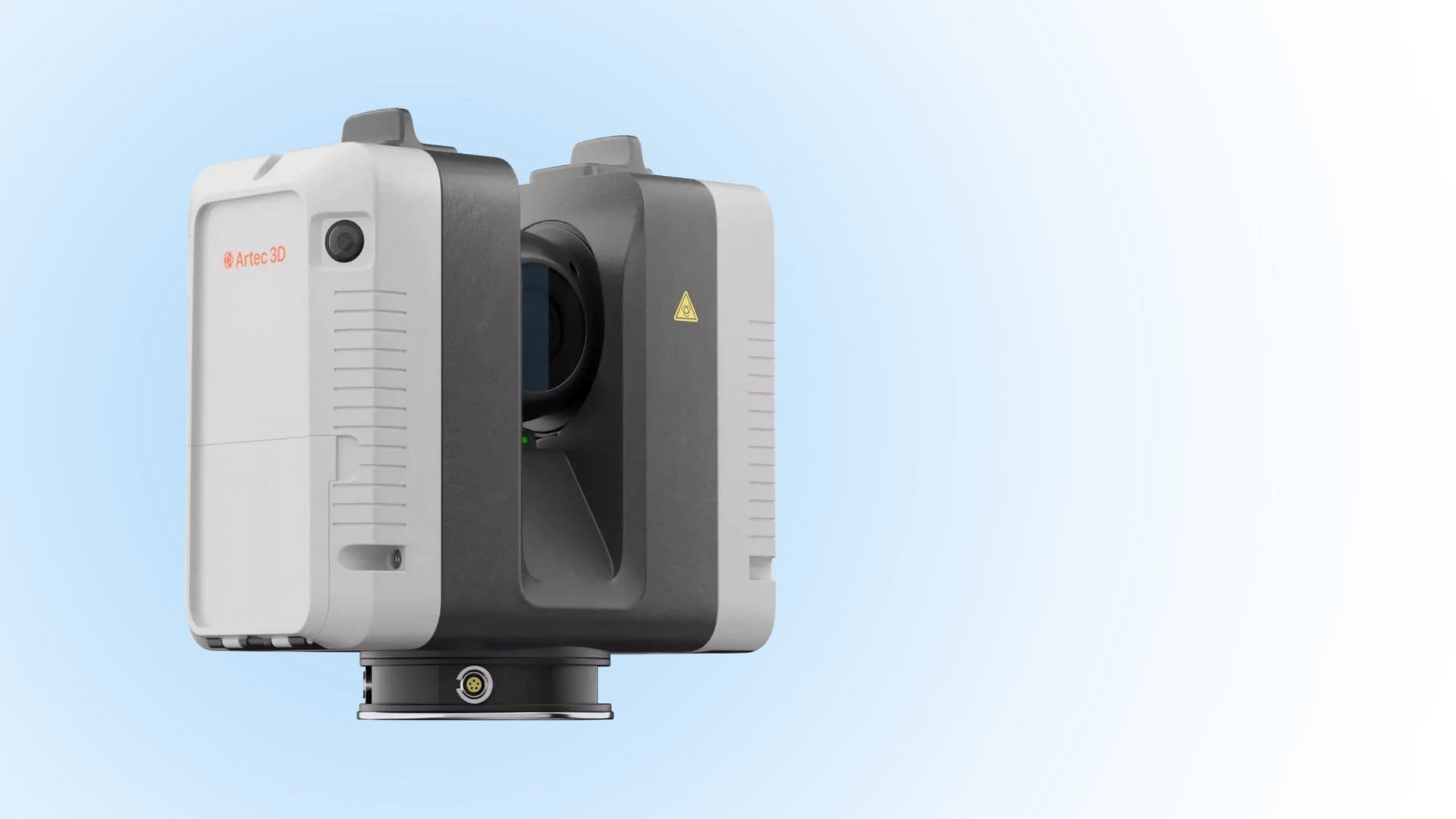
Long-Distance 3D Scanning for Infrastructure
Huge infrastructure projects present unique challenges that can only be addressed with advanced solutions like long-range 3D scanners. Whether it’s
Your choice of a handheld 3D scanner depends on many factors, including the intended application, the environment it’ll be used in, and the quality of results you desire. Other important considerations include its accuracy, versatility, portability, and cost.
Handheld 3D scanners are mainly designed to help you scan large, immovable objects by moving around them with ease to capture multiple views. They can also scan small objects with great precision.
Nevertheless, the quality of your scans and overall scanning experience depend on the type of handheld scanner you choose. In this article, we’ll outline the main considerations you need to make when choosing the right handheld 3D scanner.
Handheld 3D scanners help you generate 3D models of physical objects that you can store digitally or use to replicate the object. So, the first consideration you need to make when choosing a handheld scanner is the type and size of objects you intend to scan.
Although these scanners can be moved around an object to capture it from different angles, they have a static field of view that influences their scanning range. Choose a handheld scanner with a scanning range that accommodates large objects to simplify your work.
It’s important to explore this aspect, especially when evaluating the pros and cons of handheld 3D scanners, because it will affect the overall outcome of your projects. Consider the largest object you’re likely going to scan to determine whether to opt for a long-range or short-range handheld scanner.
A handheld scanner with a scanning range of 1,440 millimeters by 860 millimeters can capture objects that are four meters away. This is a good range for small and medium-sized objects, especially those used in 3D printing and manufacturing.
Accuracy is the most important aspect of 3D scanning, as it determines the quality and usefulness of the final scans. Inaccurate scans will lead to defective 3D models and costly errors in the final products, especially in manufacturing.
These scanners are normally used in critical areas like the automotive, architecture, construction, engineering, and medical industries, where accuracy is extremely important. Choosing a scanner with low accuracy will lead to costly and disastrous defects in your final replicas, forcing you to redo the scans multiple times, which will put a strain on your time and finances.
Generally, a scanner’s accuracy depends on various factors, including the scanning range, scanning technology in use, and the complexity of the object being scanned. Understanding these aspects will help you understand how to improve handheld scanner accuracy.
The lowest degree of accuracy for handheld 3D scanners is between the range of 0.01 and 0.1 millimeters. The most acceptable accuracy range for this type of scanner is between 0.06 and 0.07 millimeters.
The scanning rate of a handheld 3D scanner refers to the speed at which the scanner captures data. This rate depends on the scanning technology, scanning area, and the number of laser lines.
A good handheld 3D scanner can capture hundreds of thousands of points per second. Choose a scanner that allows you to capture enough data points within the shortest time possible to help you complete large scanning projects quickly.
It’s a good idea to understand how different scanning technologies work in order to determine which one suits your projects. Handheld 3D scanners use various scanning technologies, including laser triangulation, structured light, and photogrammetry.
Each technology has its unique pros and cons that you should be aware of to know which one is likely to serve you effectively. The scanning technology you choose for your handheld scanner depends on your scanning needs.
‘Resolution’ is the minimum distance between the captured data points at a particular scan range. ‘High resolution’ refers to a high density of the cloud of data points captured. Choose a scanner with high resolution if you want 3D models with clear details.
Your budget determines the type of handheld 3D scanner you choose. Fortunately, most handheld 3D scanners are pocket-friendly, but you can opt for a high-end scanner if you have the budget for it.
The type of handheld 3D scanner you choose depends on the type of objects you want to scan, the level of accuracy you desire, and your budget. You also need to consider the scanner’s intended use and the environment you plan to use it in!
3D Scanning & Metrology News, Press, Insights, Trends, Case Studies, and more.

Huge infrastructure projects present unique challenges that can only be addressed with advanced solutions like long-range 3D scanners. Whether it’s

Different long-range scanner brands offer varying features and capabilities; hence the need to understand the most crucial aspects of long-range

The key difference between long-range and short-range scanners is the maximum distance at which they can capture data. Ordinarily, long-range

The key elements to consider in long-range 3D scanners include accuracy, scan speed, resolution, scanning mechanism, and ease of use.
Secure SSL Encrypted Connection
Two-factor Authentication
© Copyright 2024 – Digitize Designs, LLC – Privacy Policy – Website by Luminos Agency